A complete guide to growing bulbous plants is here | Huaye Academy class notes
It is the pre-sale season for bulbs. Although bulbs are easy to plant, flower lovers will encounter many problems during the planting process: including which varieties to buy, why the leaves of grape hyacinths are so long during planting, why daffodils grow into garlic, which bulbs bloom early and which bloom late, how to grow amaryllis to make it bloom...
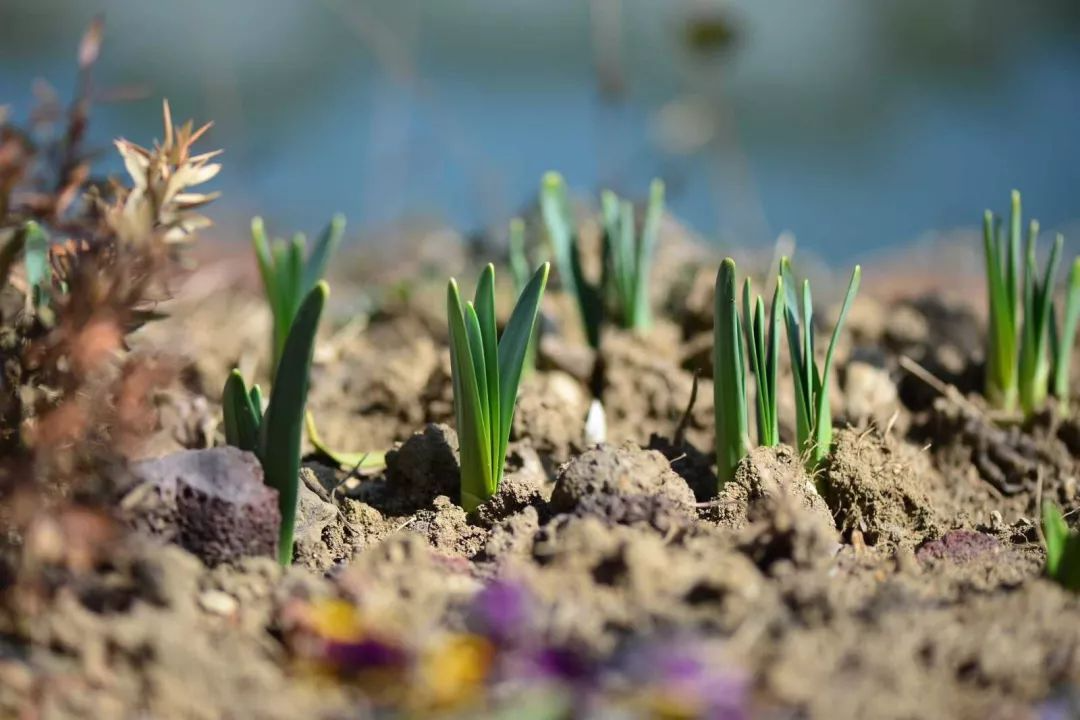
Faced with these problems, many novices are often at a loss and long for a "gardener class" to teach everyone how to grow flowers. Just like Margaret Yan's original intention of founding "IFIORI", the first online gardener series of classes specially opened by Huaye Academy is also to help more people who love gardening avoid detours and gradually advance from novices to gardening experts while understanding the basics of gardening.

This article will start from 5 aspects, including why to plant bulbs, what are bulbs, recommendations for common bulbous plants, how to choose bulbous plants, and simple maintenance of bulbous plants, to take you to have fun with bulbous flowers!
1. Why plant bulbs?

In early spring in March, the weather in the Jiangnan region has not yet warmed up, and most plants have just sprouted. The bulbs are enough to support the scene at this time.
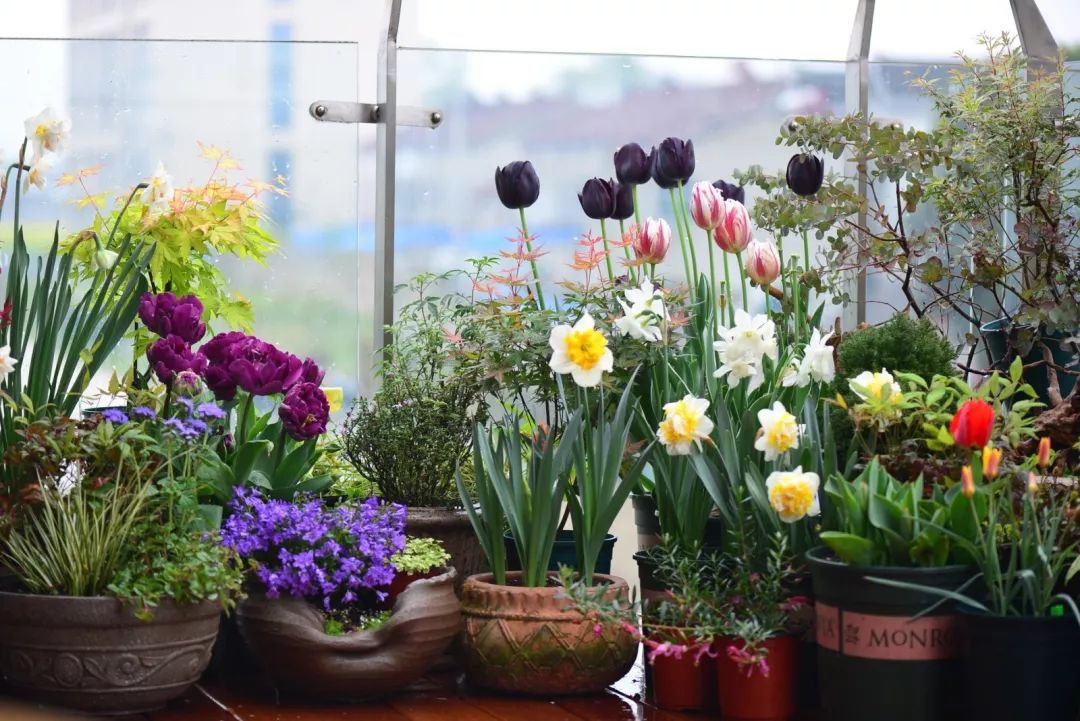
Hippo Garden Terrace in early spring in March
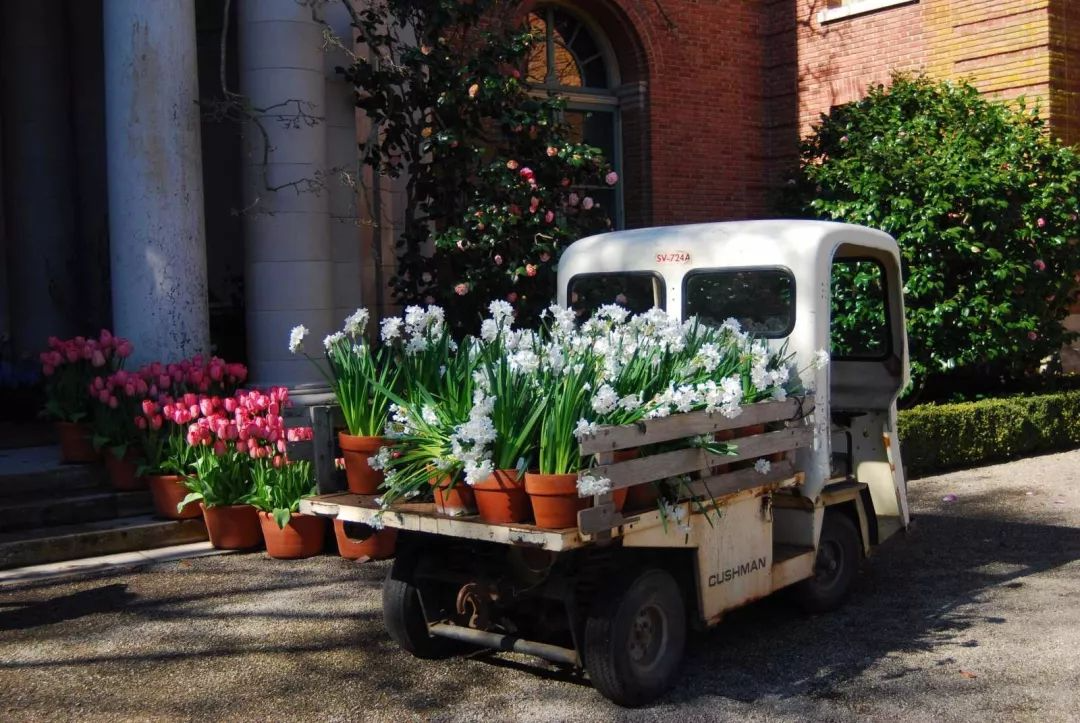
Filoli Manor
2. What are bulbous flowers?

Generally speaking, bulbous flowers can be divided into the following five categories: bulbs, corms, tubers, rhizomes, and tuberous roots. However, the bulbous plants that flower lovers usually refer to are mainly bulbs and corms.
For example, there are two classic bulbs, lily and tulip; tall plants such as allium, gladiolus, and agapanthus; and plants less than 20 cm in height, such as crocus, hyacinth, snow flower, and colchicum.
Common points: The underground part has abnormally large bulbs that can store nutrients and easily adapt to arid environments. Therefore, it is very suitable for beginners to plant.
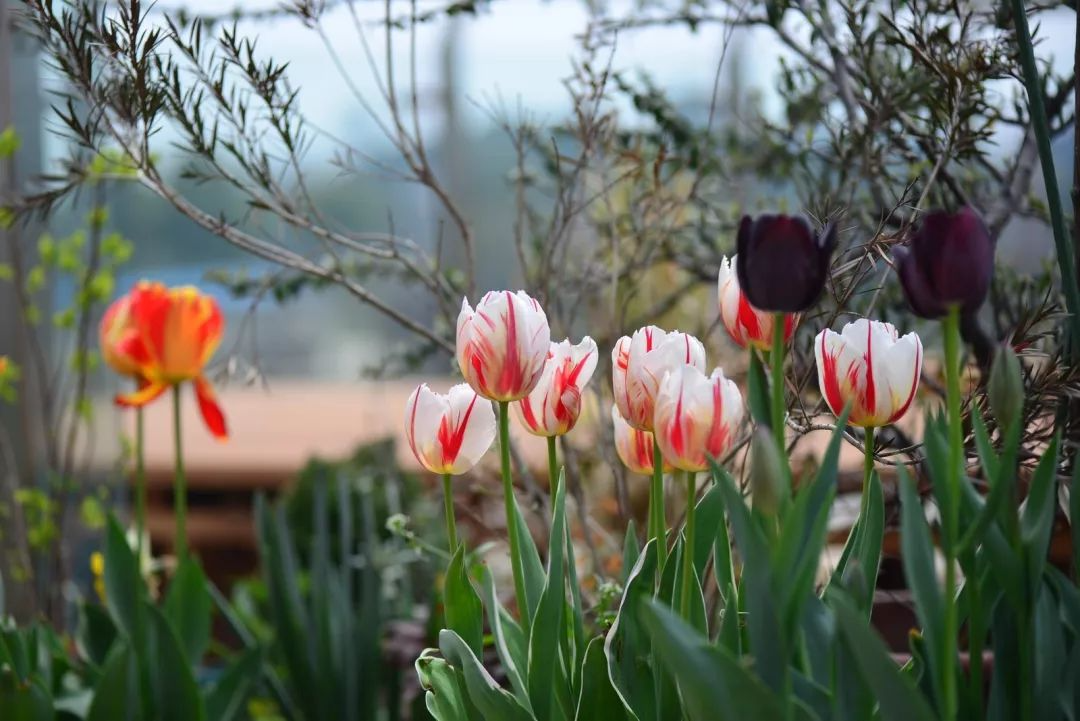
3. Common bulb recommendations

1. Hyacinth
Introduction: According to records, the most primitive hyacinth was light blue. After hundreds of years of efforts by gardening experts, there are now more than 2,000 varieties. Every year, home gardening enthusiasts will plant a few hyacinths. It has to be admitted that the flowers of hyacinths are very stunning: dozens of small cylindrical funnel-shaped flowers, surrounding the fleshy flower stems in the middle, straight out of the green leaves. The colors are very rich, purple, rose red, yellow, white, blue, etc. However, due to its strong fragrance, it is recommended not to place it indoors.
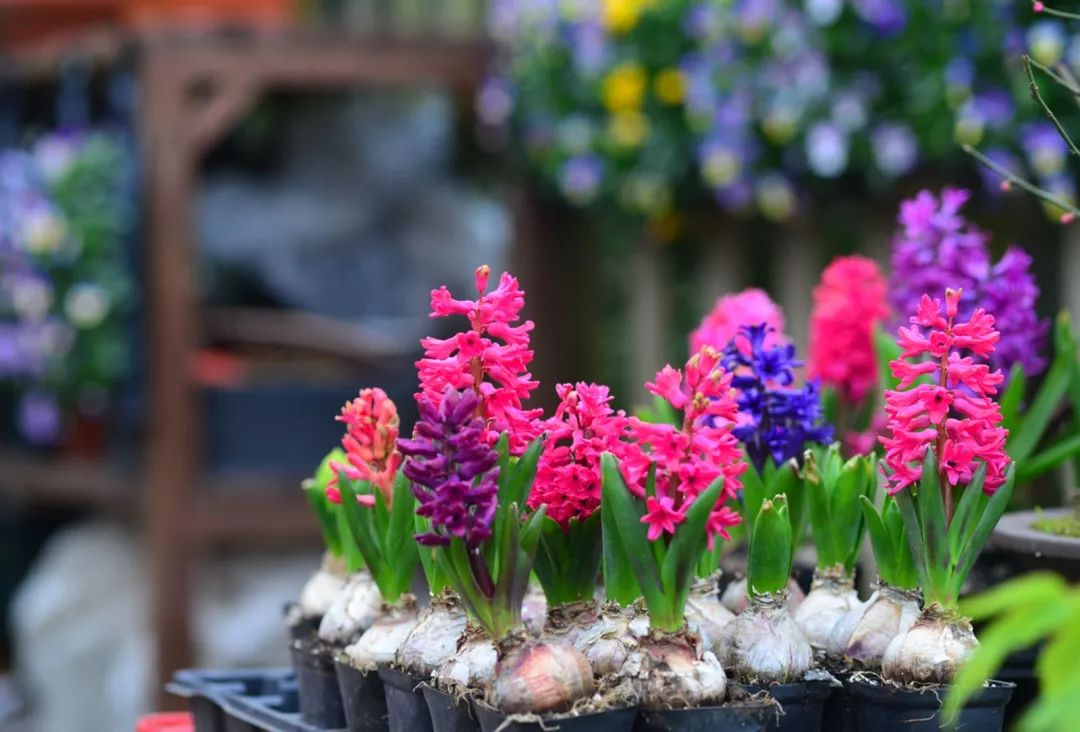
Maintenance points:
1. The bulb of hyacinth is very similar to that of onion. It likes sunshine and is cold-resistant. It is suitable for growing in a cool and humid environment and loose, fertile sandy soil, and avoids waterlogging.
2. Hyacinthus sprouts in early spring, blooms in March, and the plant usually withers by the end of May.
3. It likes fertilizer, and prefers fertile, well-drained sandy loam. Avoid overly wet or heavy soil. You can use special soil for bulb cultivation.
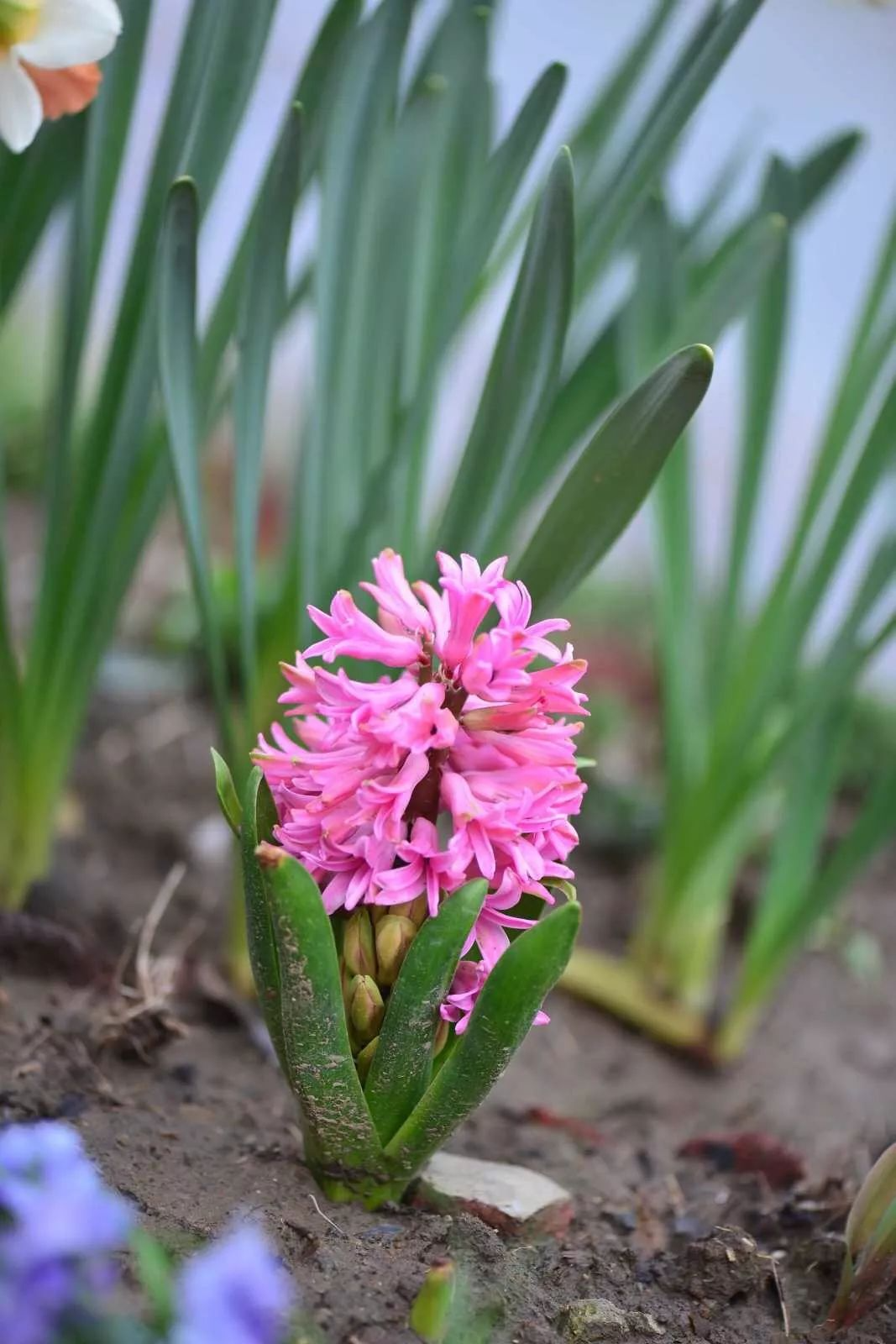
Hyacinth's re-ball problem:
Hyacinth has a low re-balling rate, and will definitely not re-ball when grown in water. If grown in potted plants, fertilizers are added after flowering to keep the bulbs until the end of May, and there is a certain re-balling rate, but the number of flowers will decrease in the second year, and the flower shape will be irregular. This is the same as tulips and domestic daffodils, and it is recommended that you do not re-ball.
The problem of hyacinth arrows:
The flower stalk does not grow tall, but the flowers bloom inside the leaves. As a result, there are few flowers blooming and they look ugly.
Tips to prevent arrow pinching: When hyacinths are first planted, water them thoroughly and place them in the shade outdoors, avoiding direct sunlight. Allow the roots to grow first, then take them out to dry in the sun after about two weeks.
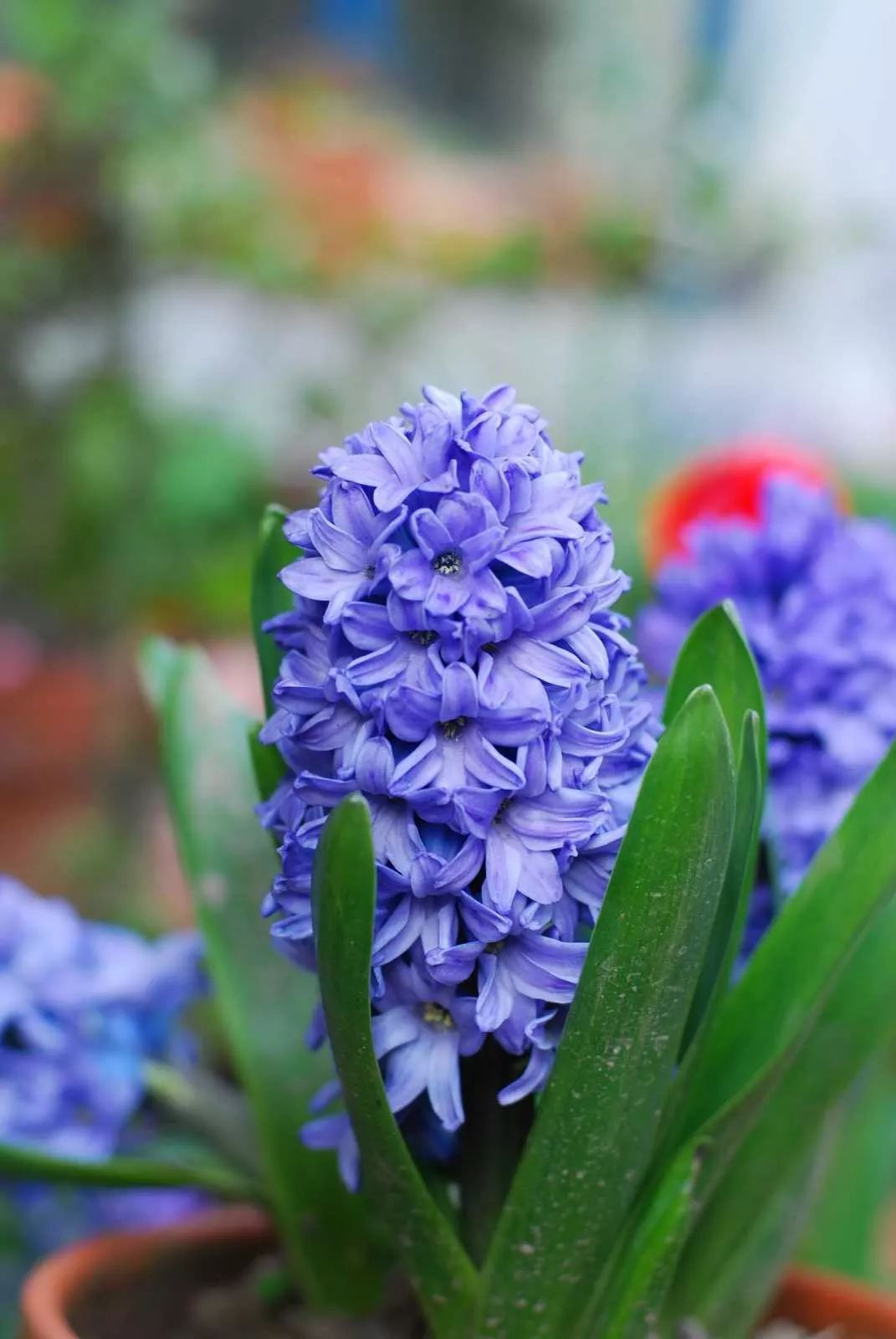
2. Grape Hyacinth
Introduction: Grape hyacinth, also known as blue pot flower and grape lily, is an excellent ornamental ground cover introduced from Europe. A group of blue-purple grape hyacinth flower beds photographed in Hangzhou's Taiziwan in early spring, with sunlight shining through the leaves, are as beautiful as a fairyland. Many people mistakenly believe that the scene was taken in the most famous bulb garden in the Netherlands, Hockenhof.
The flower color is mainly blue-purple, the plant is short and clumps, the scape is 15-20 cm high, and it is more suitable for potted planting at home. The inflorescence is tall, with dozens of bell-like small flowers clustered together. The whole inflorescence is like a bunch of blue-purple grapes, which is very beautiful and elegant. The flower colors also include sky blue, white, purple and pink.
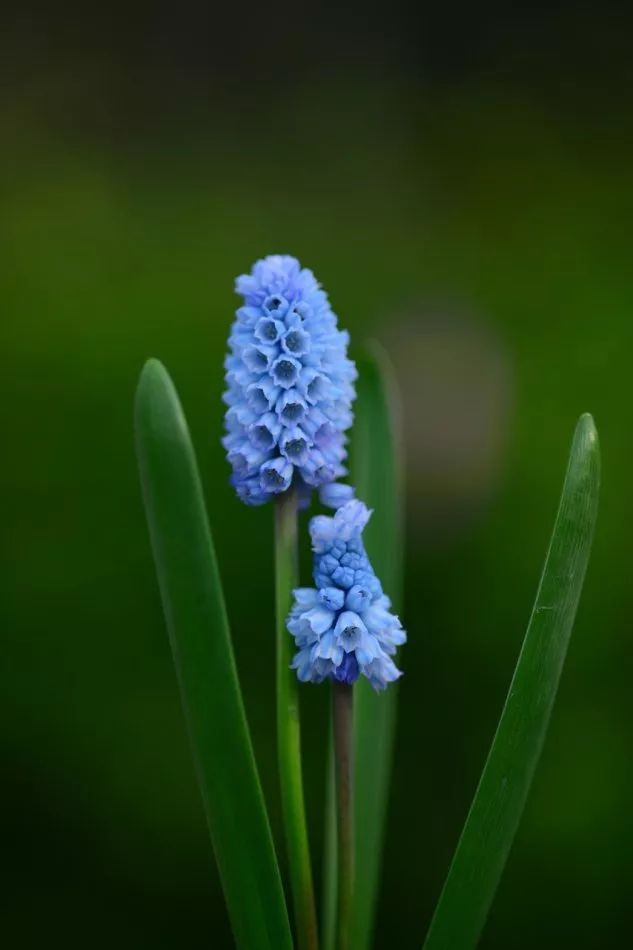
The problem with the replay:
It is easy for the Portuguese wind to rebulk and reproduce small bulbs. If planted in the ground, the bulbs can be raised before the rainy season, otherwise the high temperature and humidity will cause the bulbs to rot. If it is potted, if it does not bulb, it can be placed in a cool and ventilated place to keep it dry and avoid watering or rain.
If you need to rebulb, try to cut off the flower stem in time after flowering, otherwise the seeds will be produced and nutrients will be wasted. Continue to water and fertilize the bulb until the leaves on the surface turn yellow and wither.
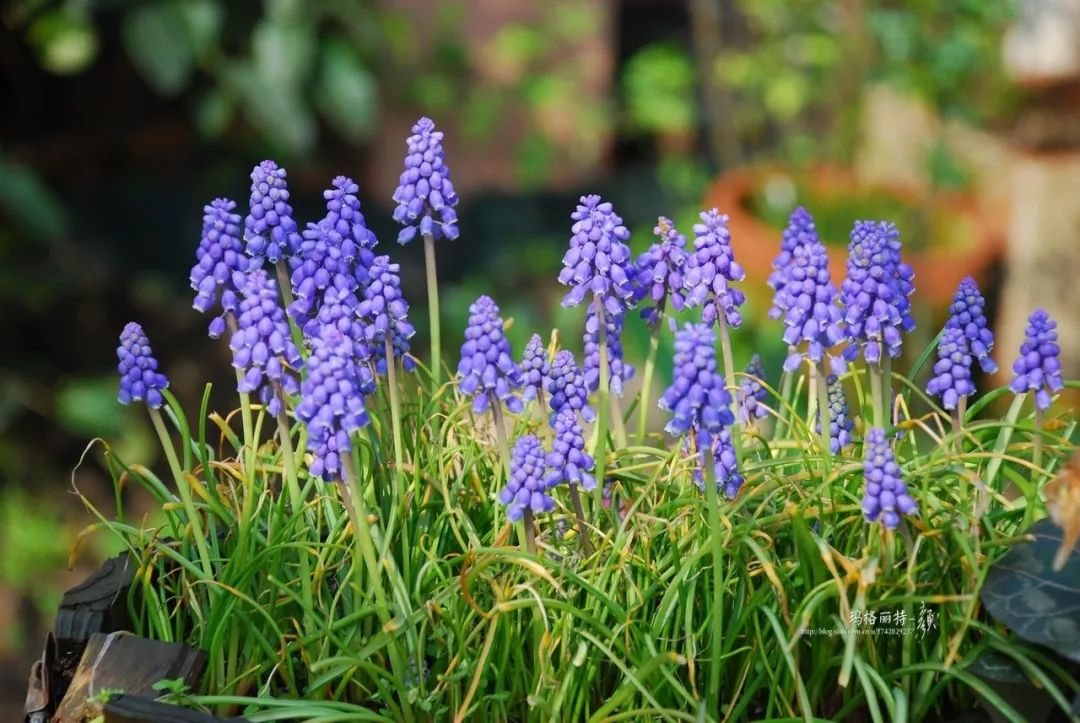
Maintenance points:
1. It likes warm and humid winter, cool and slightly dry summer, and sunny or semi-shaded environment.
2. It tolerates partial shade, so it is also very effective as a flower border planted under the forest.
3. It is very cold-resistant. It will sprout and grow leaves after being planted in autumn, and the leaves will remain evergreen in winter.
4. Suitable for loose, fertile, breathable soil, avoid waterlogging.
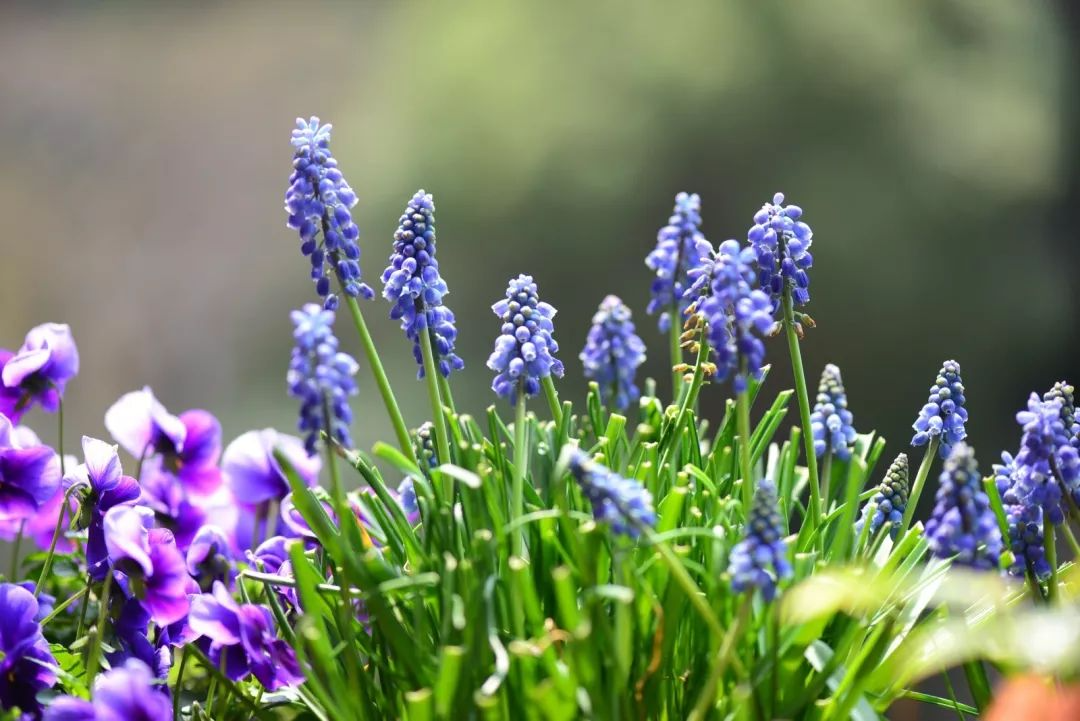
Problems with grape hyacinth leaves being too long:
The Portuguese wind plant starts to sprout and grow leaves in autumn. If the leaves are not controlled well, they will easily become disheveled, affecting its appearance. In addition, if the leaves absorb too much nutrients, it will also affect flowering.
The trick is: water the new bulbs or repotted bulbs thoroughly when planting them, and place them in a shaded place for 2 to 3 weeks to allow the bulbs to grow roots. After germination, control watering and provide sufficient sunlight. This way, the green short leaves with bunches of small grapes on top will look very nice!
If the plant is not managed properly and the leaves grow too long, they can be cut short. The leaves will become slightly dry after pruning, but it will not affect flowering.
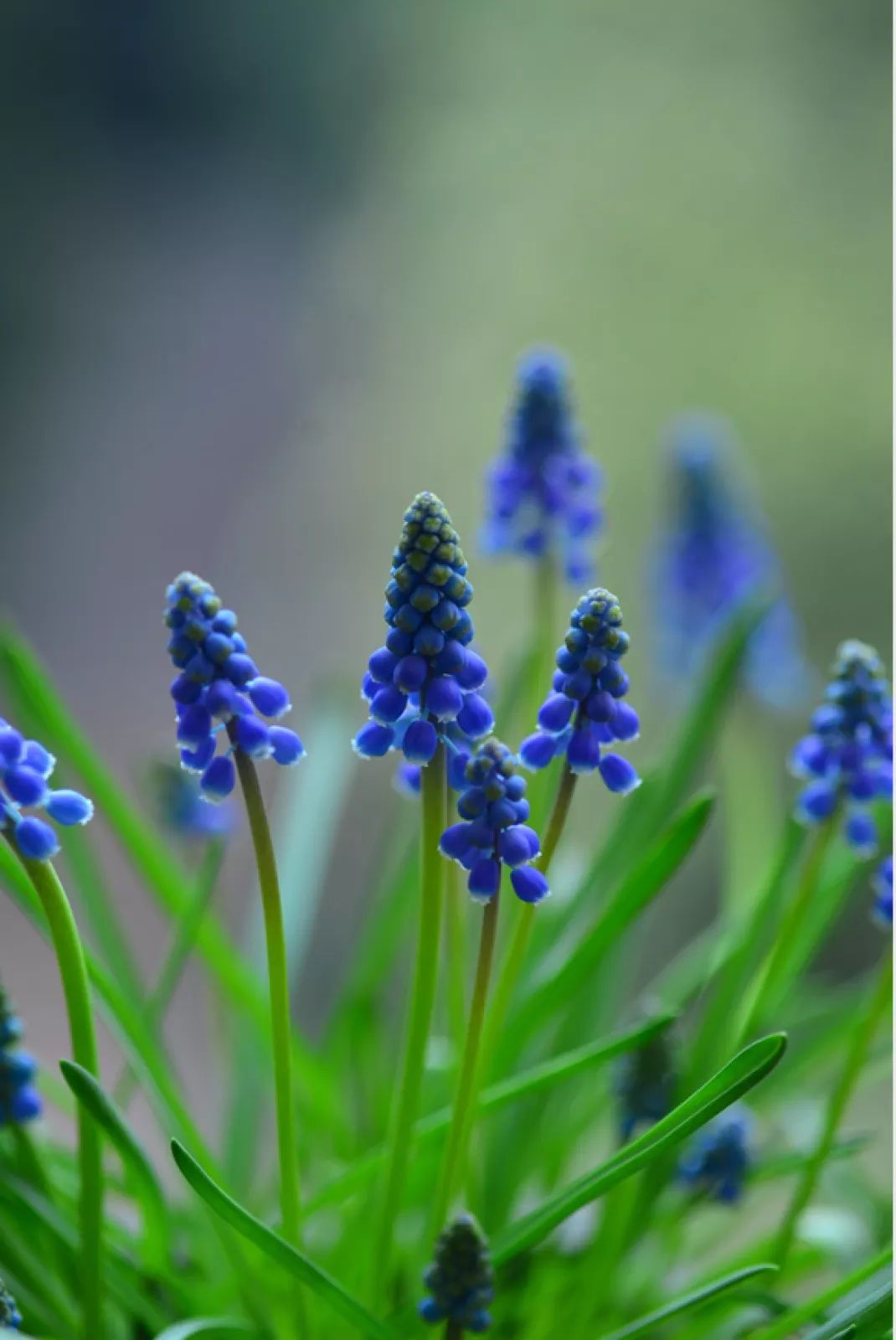
3. Tulip
Introduction: There are more than 8,000 varieties of tulips cultivated through hybridization in the world, and more than 100 common varieties. The colors are white, pink, yellow, different shades, single or multiple colors; the flower shapes are rich, including cup-shaped, bowl-shaped, spherical, funnel-shaped, etc., with single petals and double petals. In 2005, several students from Singapore Polytechnic cultivated an almost black tulip called "Queen of the Night", which is just dark red.
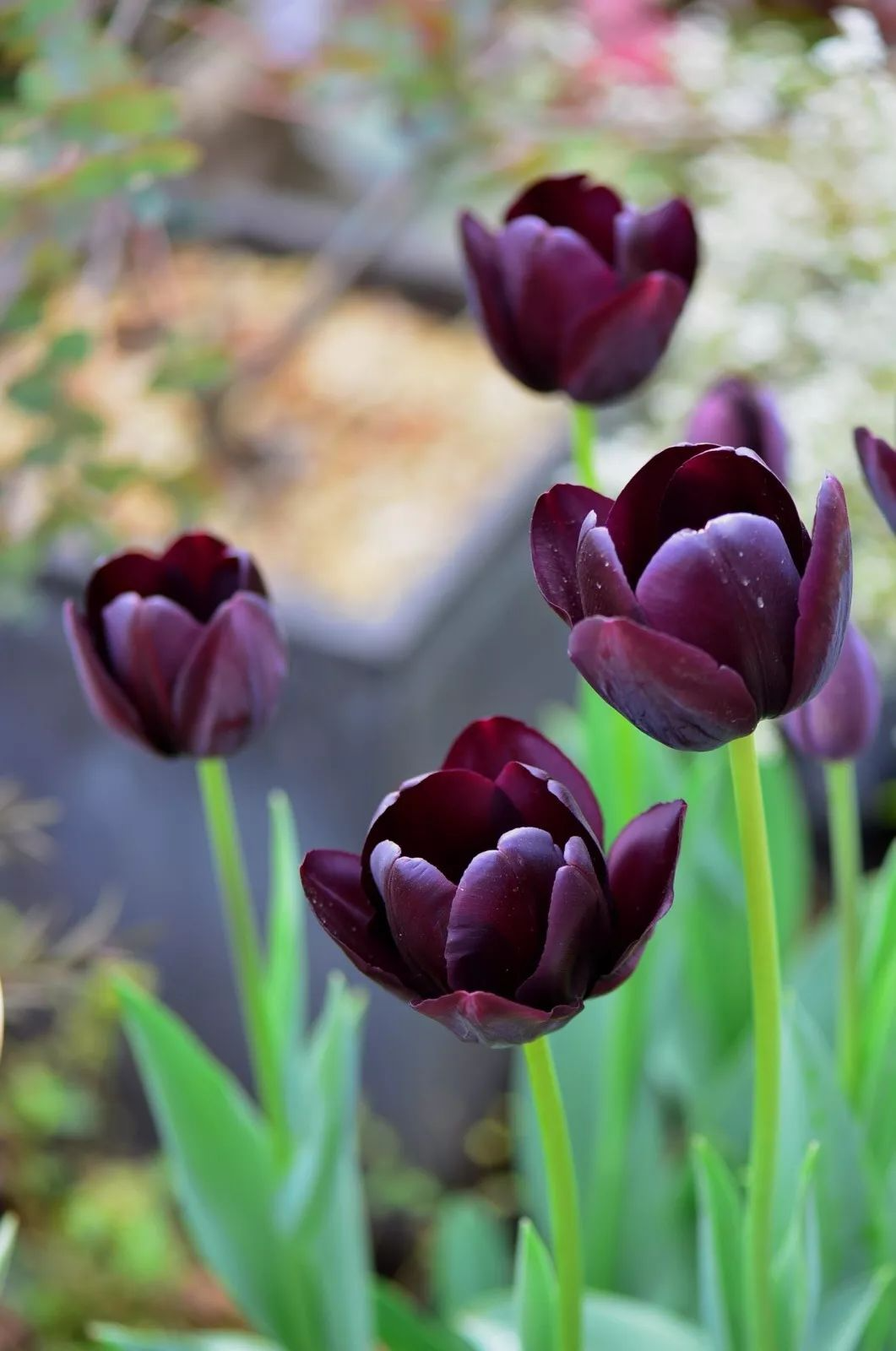
Night Empress
Maintenance points:
Tulips are long-day flowers that like the sun and need shelter from the wind. They prefer a warm and humid environment in winter and a cool and dry environment in summer. They can withstand temperatures as low as -14 degrees Celsius and have strong cold tolerance. In cold areas, if there is thick snow covering the bulbs, they can also spend the winter in the open. They are afraid of heat in midsummer and the bulbs go dormant.
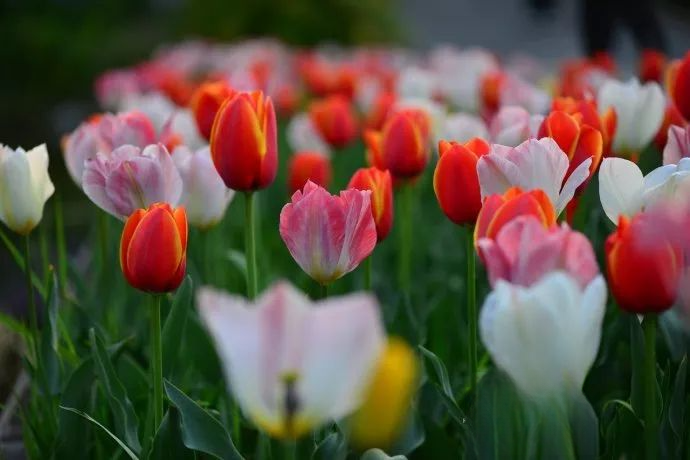
The problem with the replay:
The re-flowering rate is low, and even with good maintenance, it is only 50%. Plant it in the ground, water it thoroughly, wait for it to sprout in spring, bloom in March-April, and continue to fertilize after flowering, and you can have a certain re-flowering rate.
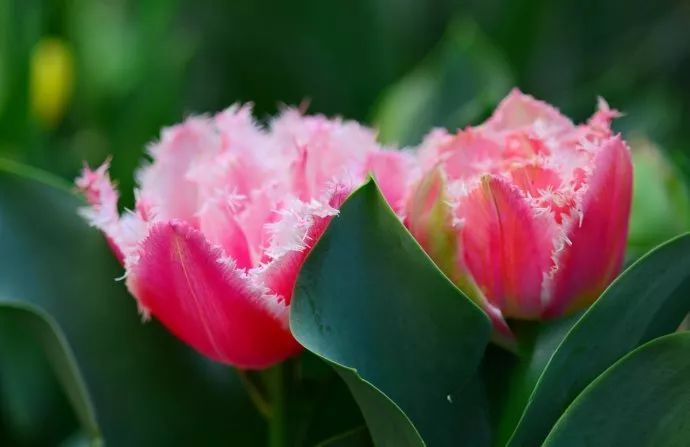
4. Amaryllis
Introduction: Amaryllis is also called amaryllis. Its green leaves stretch out a tall scape and several colorful large flowers, which are really amazing. They are all foreign horticultural species, which we call "foreign amaryllis", which is different from the "local amaryllis" that has existed in China for a long time. Local amaryllis is actually quite good, very hardy, easier to bloom, and more resistant to frost in winter. If amaryllis is well maintained, it can bloom twice a year, once in late autumn or early winter, and then grow again in early spring after winter dormancy, and bloom again in April or May.
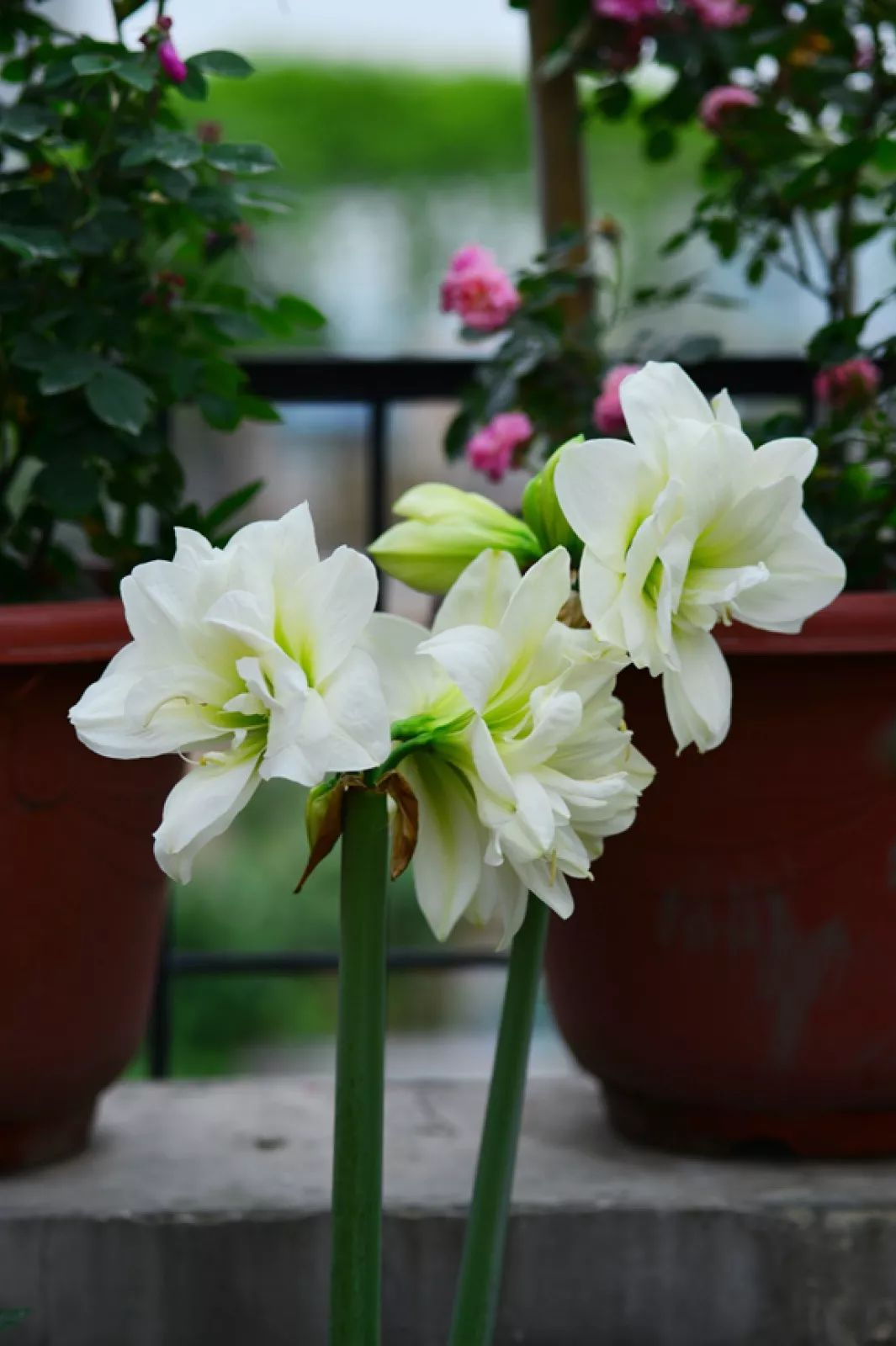
Maintenance points:
1. Like warm and humid climate, dislike hot weather.
2. The sunlight in summer should not be too strong and appropriate shade is needed.
3. It needs to hibernate in winter. The temperature should not be too high, but it should not be lower than 5℃. It needs to be protected during the winter. Keep it dry during the dormancy period and do not water it. If the soil is too wet, the plant will continue to grow, which will hinder its dormancy and affect normal flowering the following year.
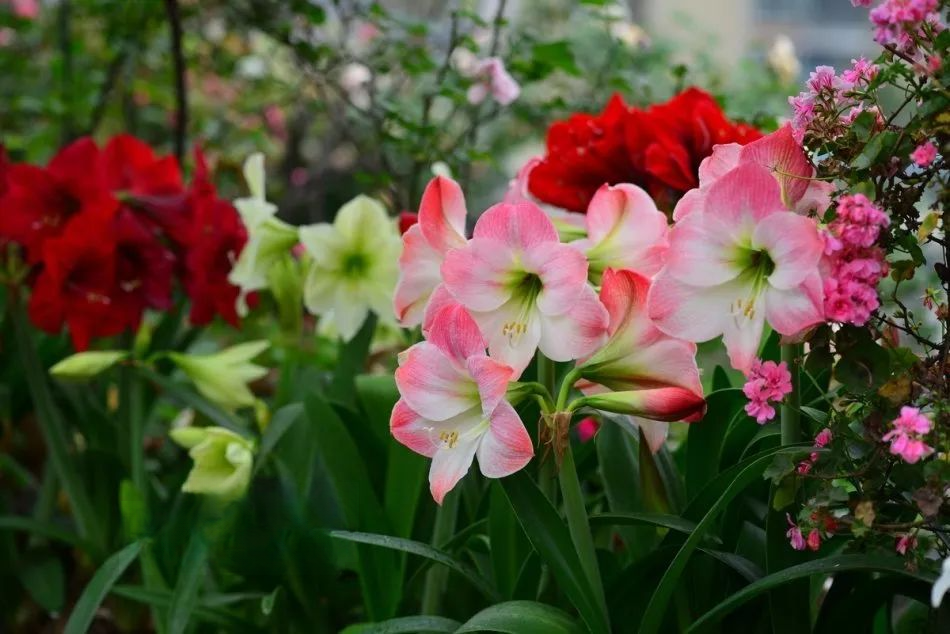
4. It likes sandy loam rich in humus and with good drainage. Avoid waterlogging, otherwise the bulb will easily rot.
5. It likes fertilizer, so the pot should be changed every two years and base fertilizer should be applied. Only with sufficient fertilizer during the growing period will the flowers bloom more and more beautifully.
6. After the flowers fade, the pedicels should be cut off in time, otherwise they will absorb nutrients and affect the growth of the bulb.
(It is said that the flower stalks can be eaten after being cut off, blanched in hot water and served cold, or stir-fried.)
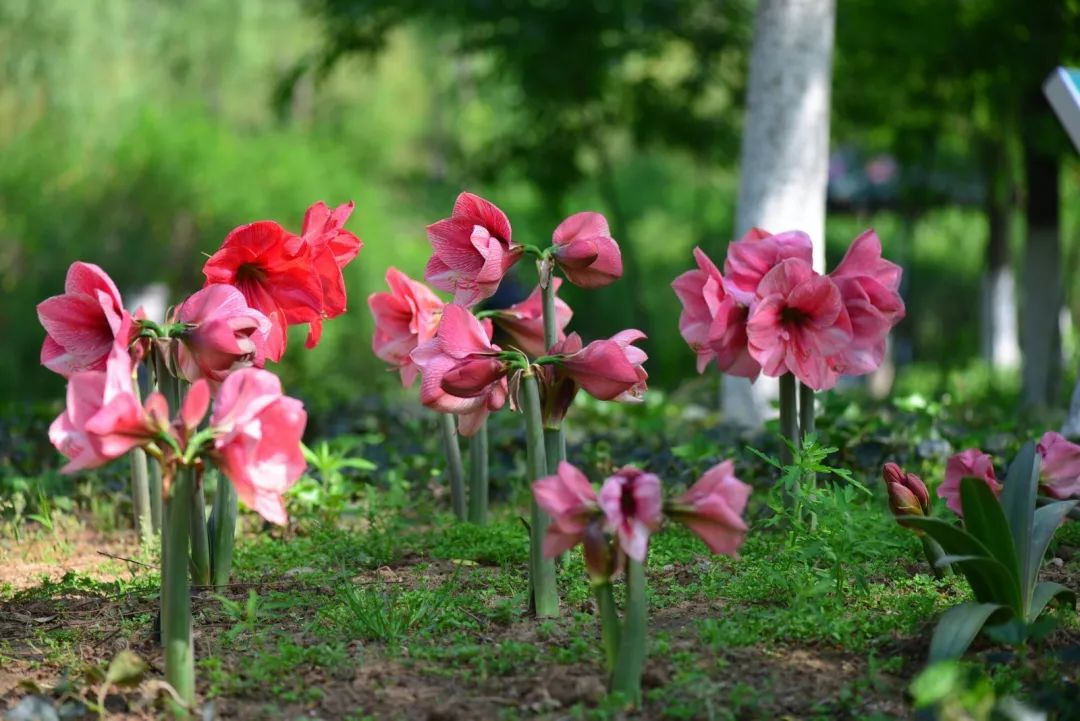
5. Daffodils Japanese and Western Daffodils
Introduction to Chinese Narcissus:
Zhangzhou Narcissus var. chinensis Roem. is planted in December every year and blooms around the Spring Festival. Each flower stem can have 5-8 flowers.
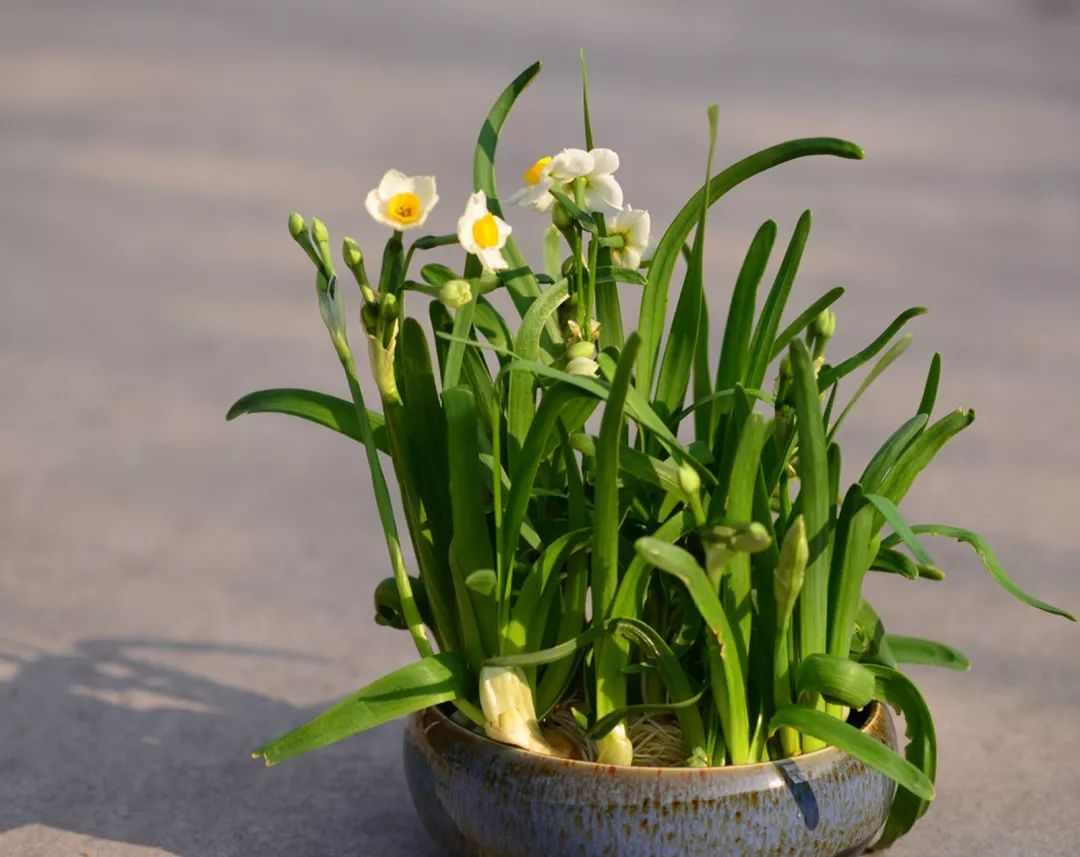
Note:
If the temperature is too high, such as when placed in an air-conditioned room with sunlight, the leaves will quickly grow taller and more and more like garlic. Although the flower stalks will eventually emerge, the nutrients of the bulbs will be absorbed by the leaves, and the daffodils will no longer have the energy to bloom. Therefore, many daffodils that grow into garlic will eventually lose their buds.
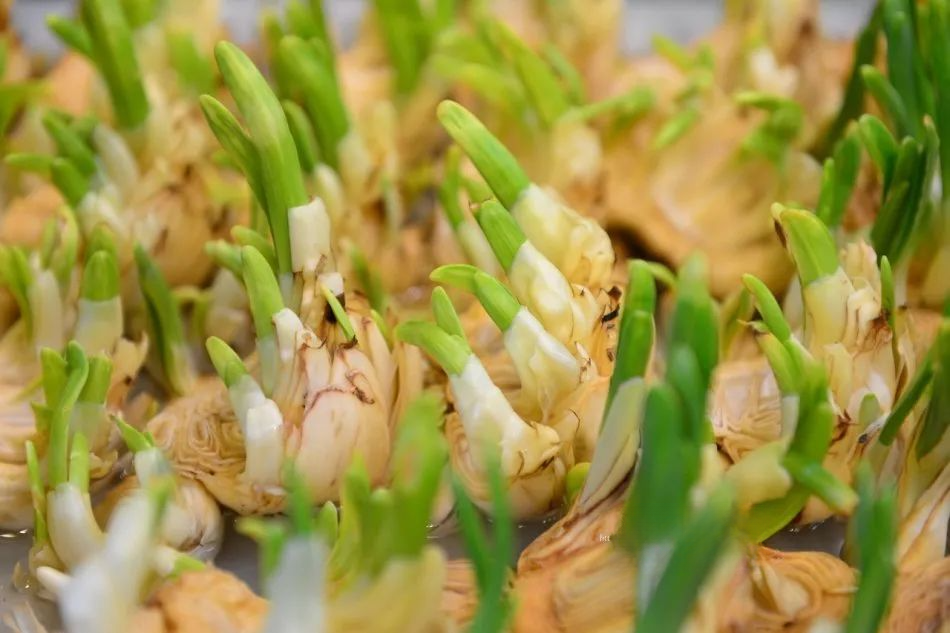
Maintenance points:
1. The flower stems can grow fully only when there is sufficient sunlight;
2. Place it outdoors as long as the temperature is not below zero degrees at night and the water does not freeze.
3. You can also control the water at night by pouring out the water in the basin and adding water the next morning.
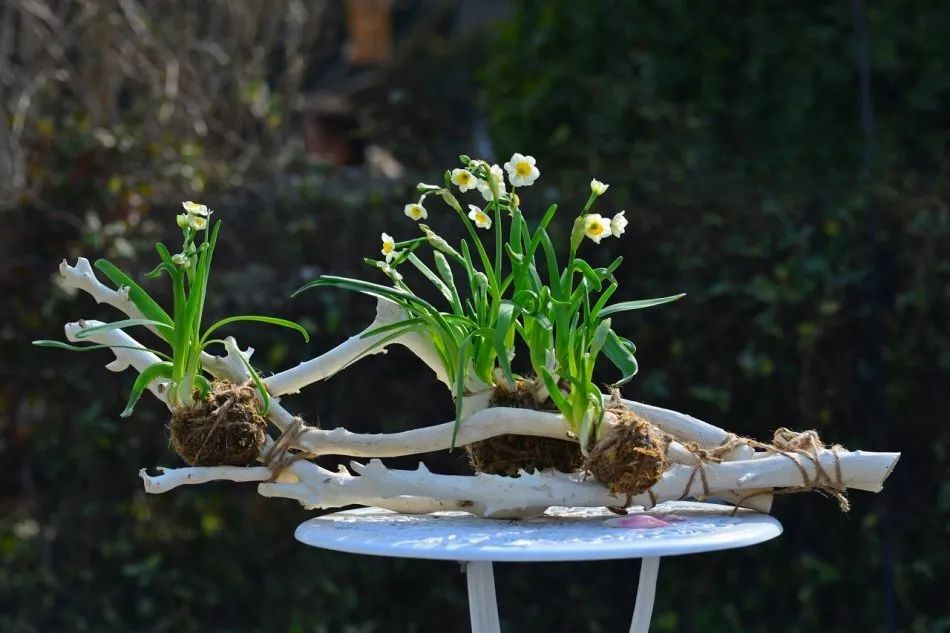
Narcissus Introduction:
Different from Chinese narcissus, they are basically called "foreign narcissus". According to legend, Narcissus was originally a very beautiful and handsome man named "Nagsus". Once he drank water from a mountain spring and saw his own reflection in the water, and fell in love with himself. Finally, when he jumped into the water to embrace his reflection, his soul separated from his body and turned into a beautiful narcissus... Narcissus is called Narcissus in English. Most of the foreign narcissus flowers are relatively large and have no fragrance. There is only one flower on one flower stem.
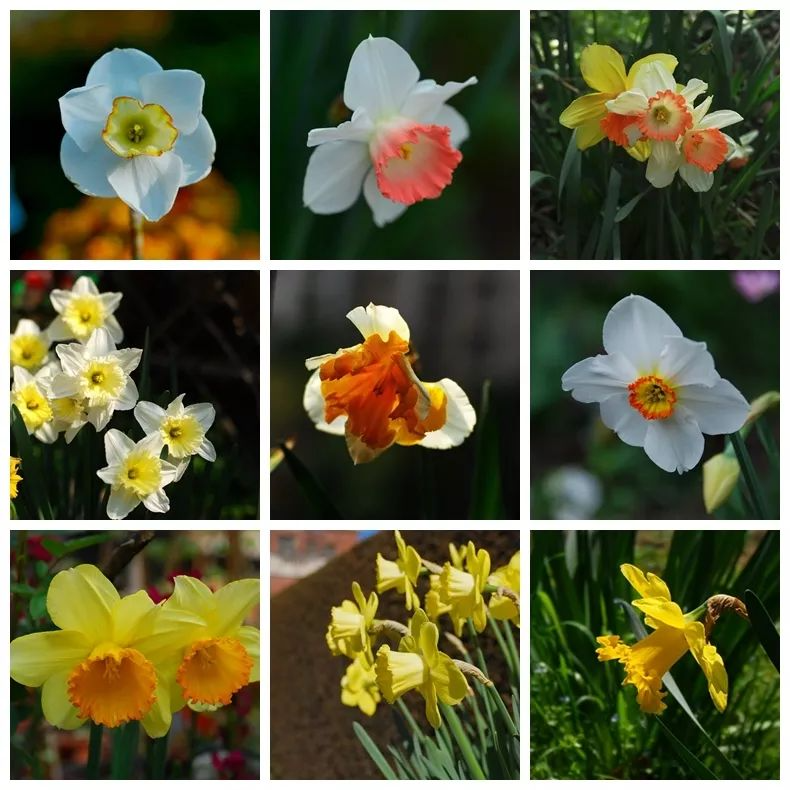
The problem with the replay:
Daffodils are easy to rebloom, and as long as you prevent the bulbs from rotting in the summer, they will bloom every year.
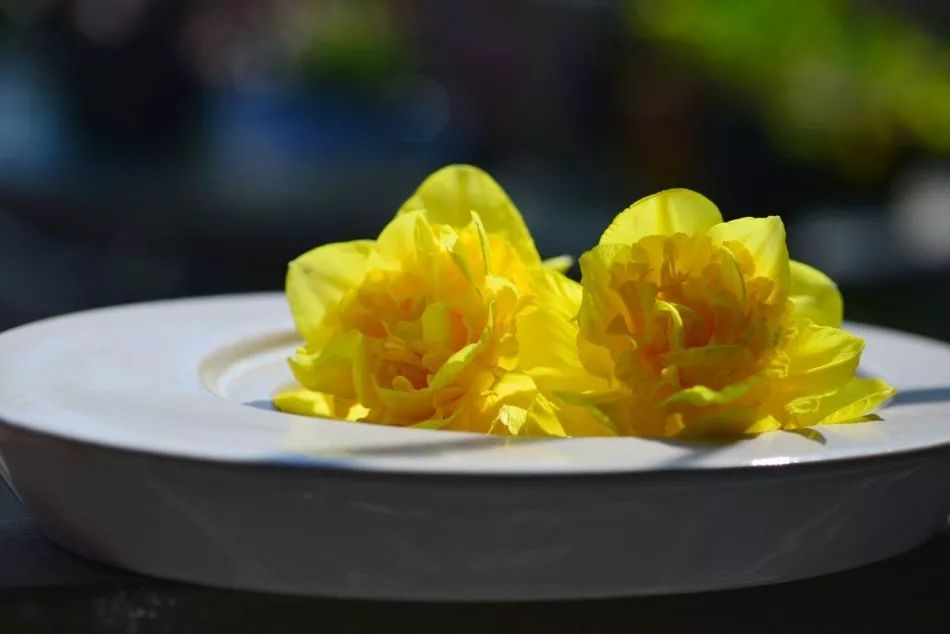
Maintenance points:
Ground-planted daffodils are planted after buying the bulbs in October and November each year, and no later than early December (in the middle and lower reaches of the Yangtze River)
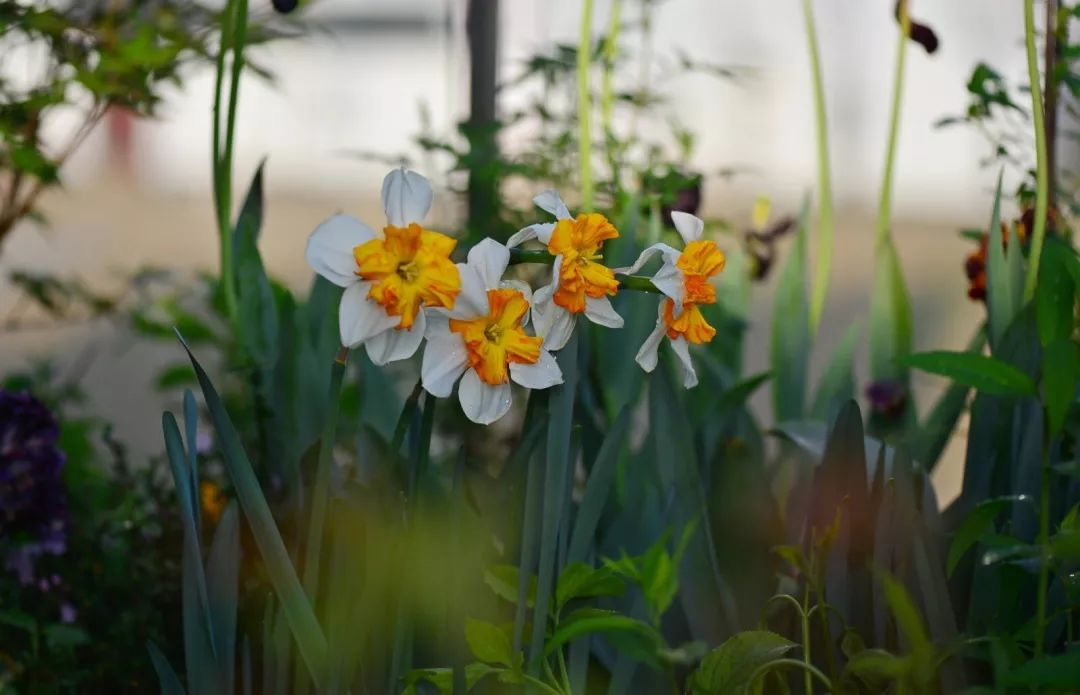
6. Oxalis
Introduction: The most suitable bulbs for balcony planting, Oxalis bulbs are small, a few bulbs in each flower pot can fill the pot, which is very satisfying, and does not take up space. Planted in autumn, most of the Oxalis bloom in early winter, and the flowering period is very long. In spring, many varieties bloom one after another. Balcony flower planting will be a headache for watering, Oxalis bulbs are very drought-resistant, and the bulbs store nutrients, so a little dryness will not affect flowering. Turn the pot soil out in late spring, and you will find that many small bulbs have grown.
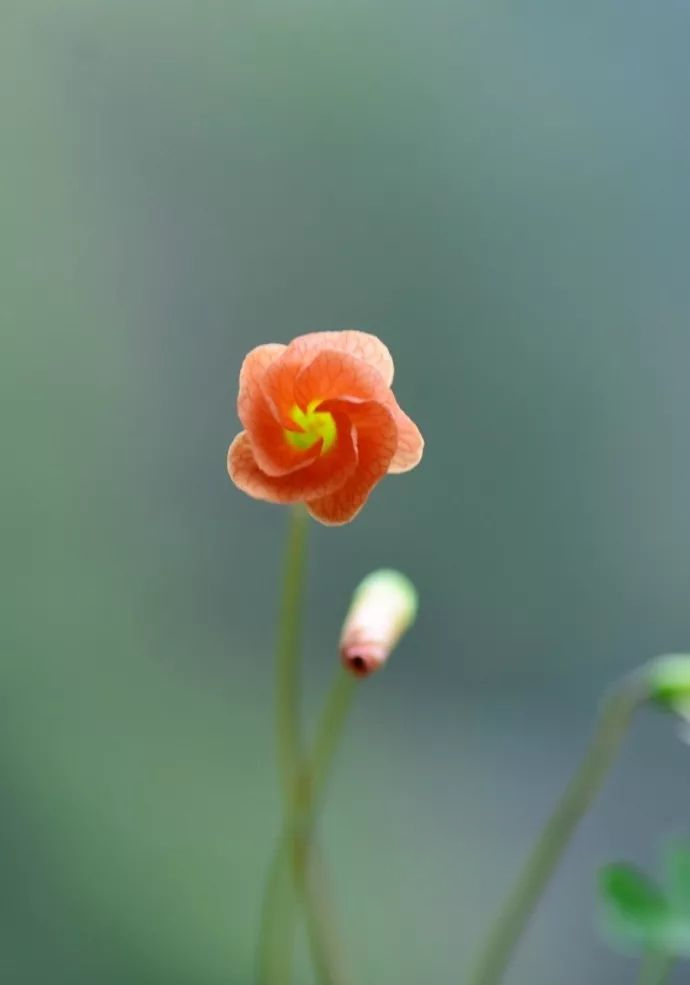
Maintenance points:
Oxalis is easy to manage. When sowing, the thickness of the soil covering the bulbs is generally 1-2 times the diameter of the bulbs, which is conducive to germination. The bulbs should be kept away from direct sunlight before germination. Oxalis is a sun-loving plant. After germination, give it as much light as possible, and the plant will grow luxuriantly and bloom many flowers.
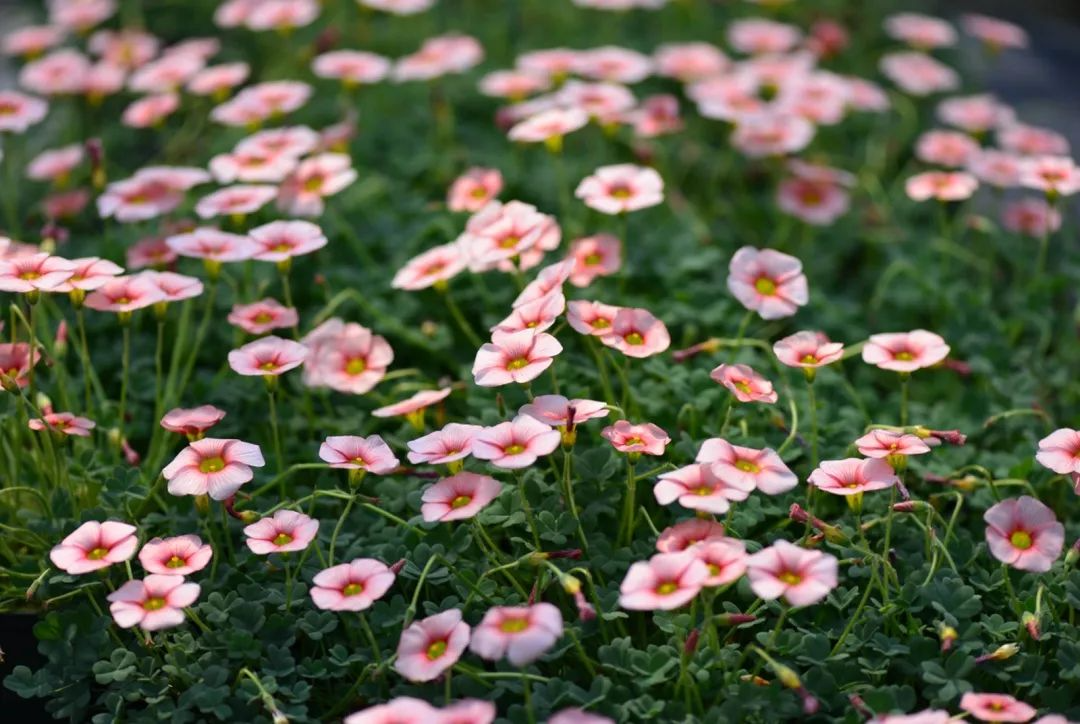
7. Lily
introduce:
Lily, scientific name (Lilium), is a perennial bulbous plant of the genus Lilium in the Liliaceae family. Lily resources are very rich in China, and wild lilies such as Minjiang lily in western Sichuan, Luding lily, Luzi lily, Baoxing lily, etc. are particularly delicious.
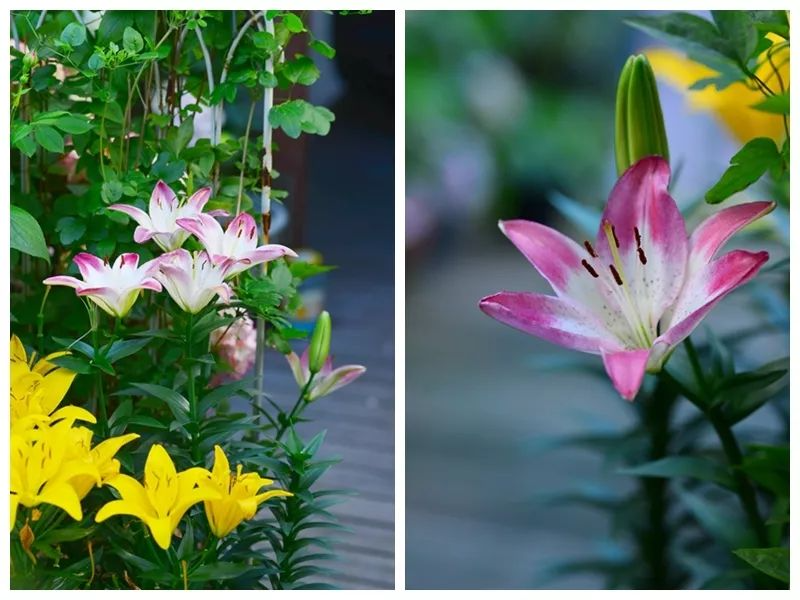
Maintenance points:
1. It likes coolness and is relatively cold-resistant. It likes dryness and is afraid of waterlogging. It is not suitable for high temperature areas.
2. It likes fertilizer and is not very demanding on soil, but it will bloom more in sandy loam with deep, fertile and loose soil.
3. Also note that lilies have strong and well-developed root systems, and excessive soil humidity can easily cause the bulbs to rot and die.
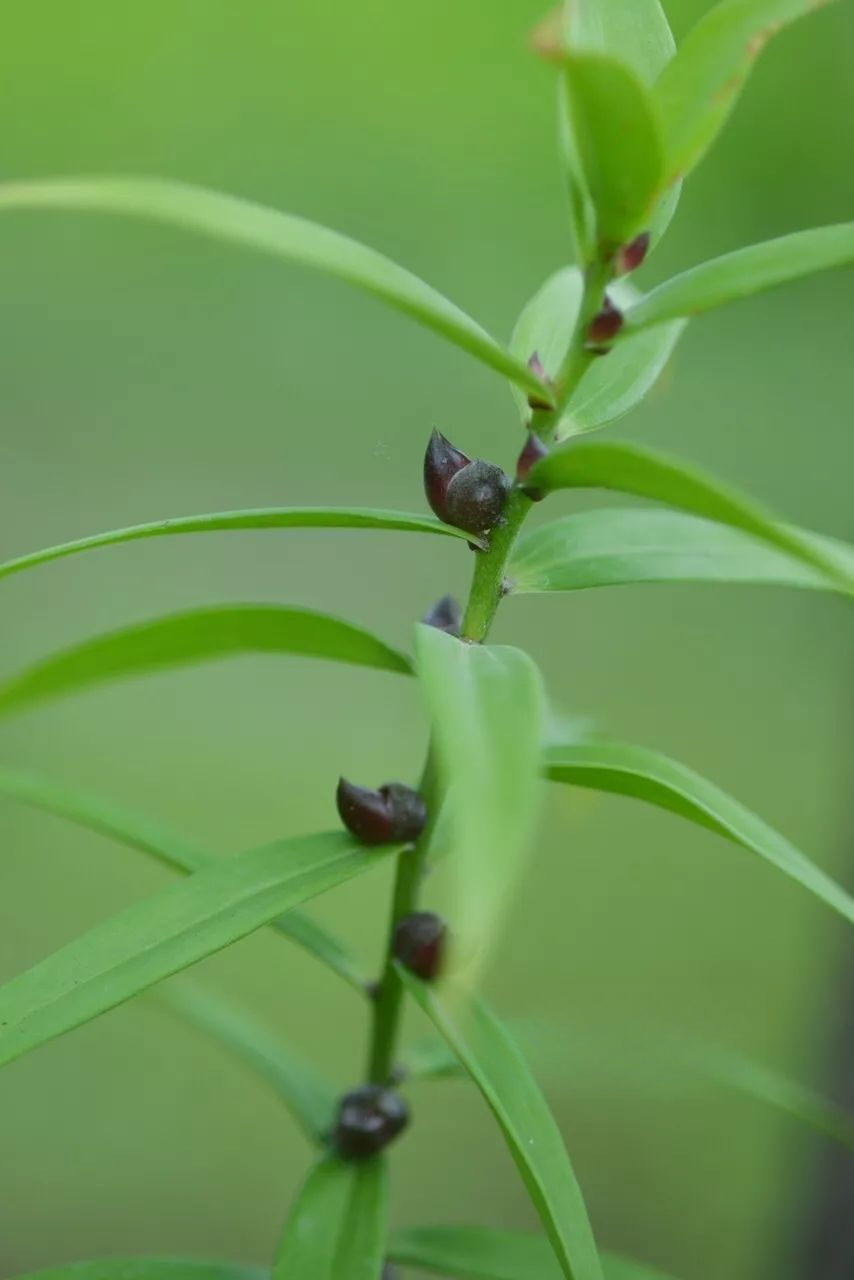
Lily bulbil
8. Saffron
Introduction: Saffron is the first variety to bloom in early spring. In ancient times, saffron was very expensive, even equivalent to the same weight of gold. The preciousness of saffron lies in its golden stigma, which is used for food seasoning and coloring, and also as a dye. The Bible, Song of Songs, Chapter 4, Verse 14, mentions some herbs, including saffron. It has a strong and unique aroma and bitter taste. It is used as a coloring and seasoning in Mediterranean and Oriental dishes, as well as in bread in Britain, Scandinavia and the Balkans.
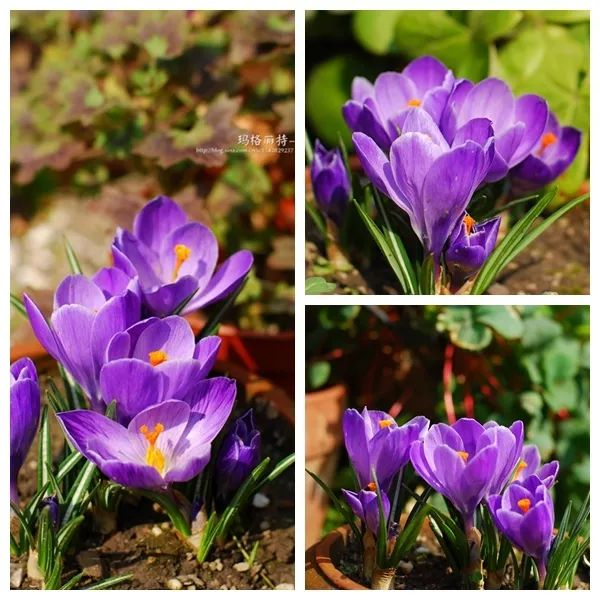
Golden stigma of crocus
After picking, peel off the petals, take out the pistil, style and stigma, spread them on a tray in a ventilated place to dry in the shade, or use an oven to dry. Dry them over charcoal fire and use them for food seasoning and coloring. 0.45 kg (1 pound) of saffron comes from 75,000 flowers. It is still the most expensive spice in the world today.
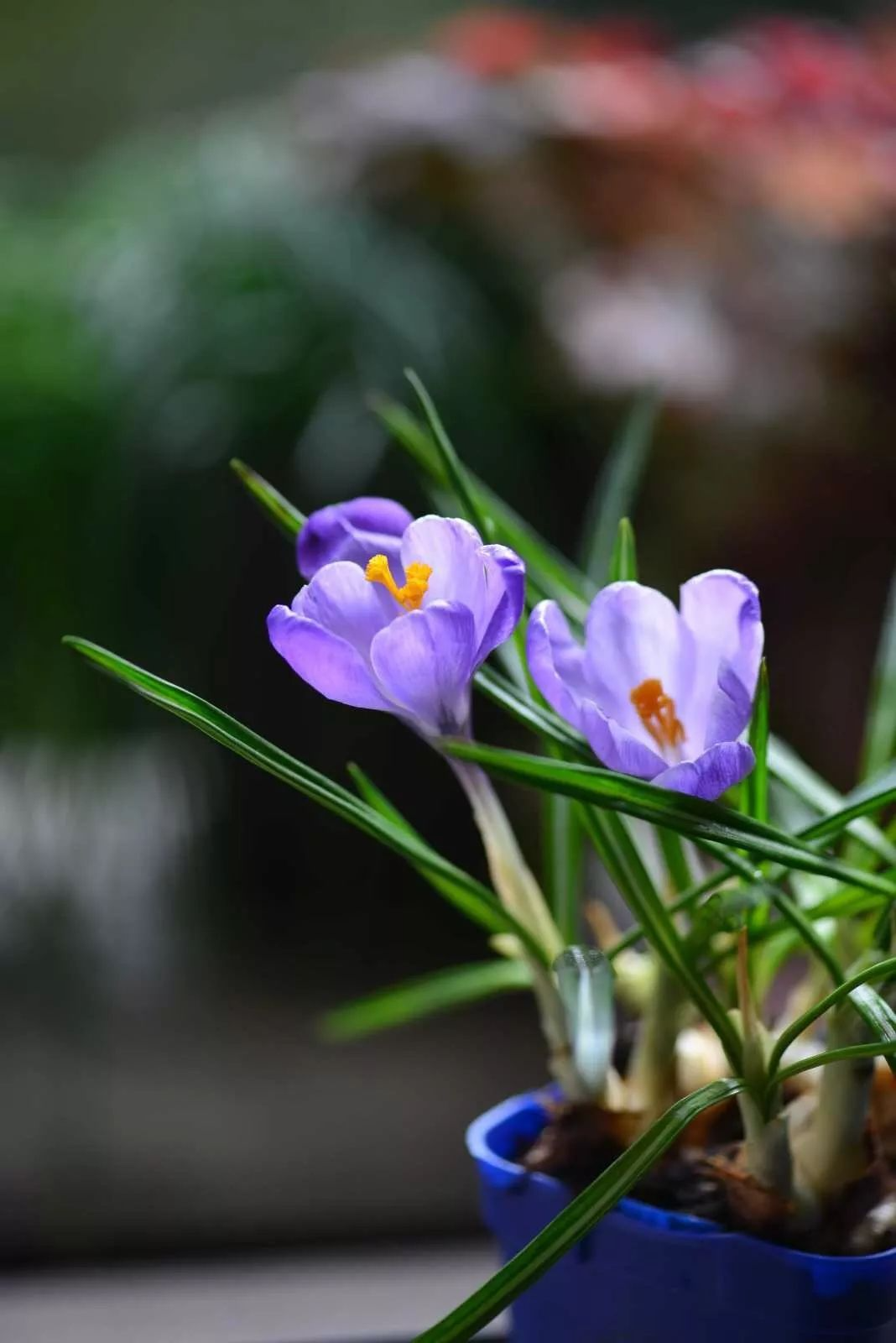
Maintenance points:
It likes cool, humid and semi-shady environment, is relatively cold-resistant, and prefers sandy loam with good drainage and rich humus.
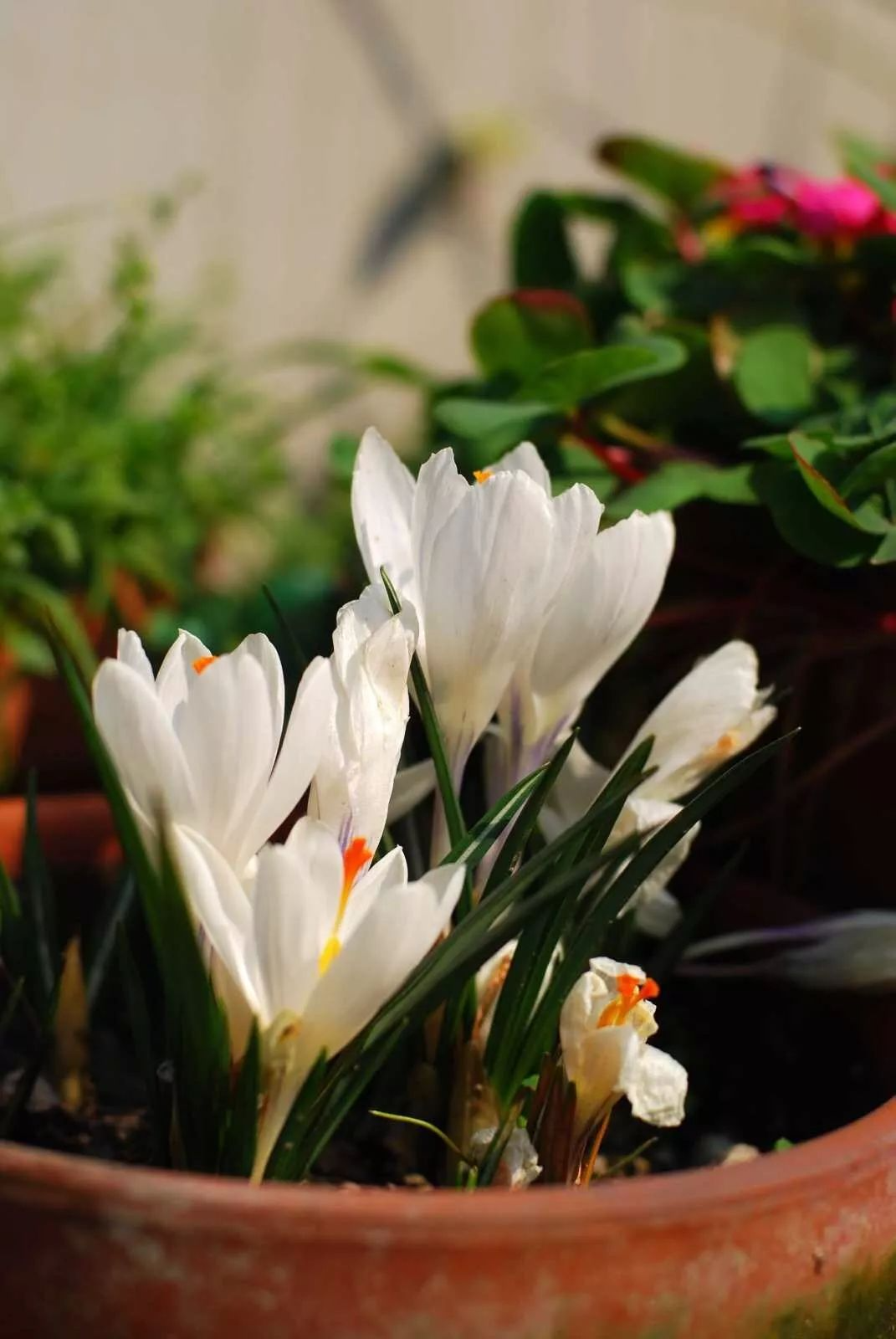
4. How to choose bulbous plants?

Good bulbs are those that are free from pests and diseases, undamaged, of moderate size, and growing robustly and fully.
Notes on buying bulbs:
1. Choose a reliable seller. In previous issues of Huaye Magazine, there were recommendations for reliable stores, and there were also many preferential activities.
2. Choose some common bulbs that are more suitable for beginners, such as tulips, daffodils, hyacinths, grape hyacinths, crocuses, chives, sorrel, allium, etc. Don't try the more difficult anemones and fritillaria. Lilies, amaryllis, dahlias, and rain orchids are suitable for spring planting, and it is best to buy them in March or April.
3. Choose full and large bulbs as much as possible.
5. Simple maintenance of bulbous plants

1. Manage outdoors in winter and do not move indoors.
2. Don’t water too frequently. Water the plant when it’s dry. Avoid waterlogging at the bulbs, otherwise they will rot easily.
3. Provide sufficient light and ventilation. The bulbs are not afraid of cold, so place them outdoors or in a ventilated place on a balcony as much as possible.
4. Bulbs generally grow roots once, so try not to transplant them during the growing period, otherwise it will easily damage the root system and affect flowering.
5. The planted bulbs will grow roots first, and some will not sprout until spring. Don’t be anxious to dig them out to see how they are growing.
6. Post-treatment of bulb flowers: Continue to water and fertilize until the leaves wither, dig out the bulbs, store in a cool place, and plant again in the autumn of the following year. (Give up bulbs that are not easy to re-flower, such as hyacinths and tulips.)
Questions and Answers:

1. In Hangzhou, the Vinegara oleracea and Vinegara chinensis at home have sprouted. The temperature is so high now, can they be planted?
Reply: Oxalis can be planted after it sprouts.
2. What bulbs are suitable for Beijing? What should I pay attention to? Can they be planted in the ground?
Reply: Beijing is suitable for tulips, alliums, and daffodils. The flowering period is late.
3. Tulips have severe arrow clamping and severe bud loss. Can the bulbs that did not bloom in the first year be planted in the second year?
Reply: The bulb is damaged, not fertile enough, the soil is loose.
4. I bought a lot of daffodils this year. I would like to know if it is easy to bloom again?
Reply: As long as the daffodils do not rot, fertilizer needs to be added.
5. Why can’t I keep the bulbs of cyclamen?
Reply: In the summer, it is hot and humid in the Jiangsu, Zhejiang and Shanghai regions, and the bulbs will rot. Wrap them in yellow sand and put them in a cool place. They will be fine when you plant them in autumn.
Steps for planting bulbs

Now is the time to prepare for the beautiful early spring bulb season. Many bulb stores have already started pre-sales, and bulbs will be available in October and November. Here are a few simple steps to teach you how to plant bulbs properly.
Planting bulbs in a few steps:
Step 1:
Check whether the bulbs are healthy, cut off the rotten and dried roots. If there are a few moldy parts, don't be too nervous. After peeling them off, soak them in carbendazim for 1-2 hours for disinfection, and place them in a cool and ventilated place to dry before planting.
Step 2: Preparation
Flower pots: Depending on the size, they can be planted densely or mixed.
Planting medium: loose, breathable, and well-drained soil, to which you can add some slow-release fertilizer; if you are a novice, you can choose special soil for bulb planting to prevent water accumulation and bulb rot.
Step 3: Planting
Add some light stone clay etc. to the potting soil to facilitate drainage.
Mix slow-release fertilizer in the medium and base fertilizer at the bottom (no fertilizer is required).
When planting, the root part should face downwards and the bud head should face upwards, and the soil should be covered according to the needs of different bulbs.
There are different heights of soil covering for bulbs on the internet, and which one is more suitable for ground planting.
It is recommended to cover the potted bulbs with 1-2 times the soil (based on the height of the bulbs). They can be planted densely to achieve better flowering effects.
Step 4: Watering
Water thoroughly and place in a cool place for 1-2 weeks to facilitate root growth, then place in the sun.